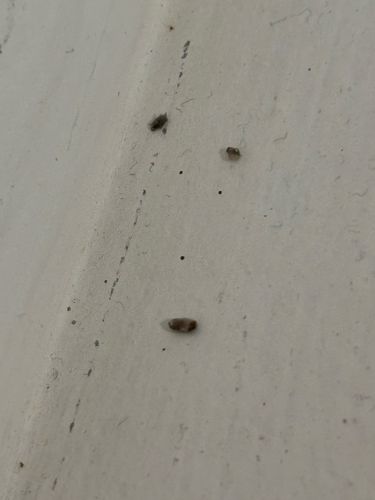Carpet Beetle Larva
Scientific Name: Dermestes spp., Anthrenus spp., Trogoderma spp. (Specific species cannot be determined definitively from the image, but these are common genera of carpet beetles.)
Order & Family: Coleoptera, Dermestidae
Size: Larvae typically range from 2mm to 5mm in length, depending on the species and developmental stage.

Natural Habitat
Indoors, commonly found in homes, museums, and warehouses. They inhabit carpets, rugs, upholstered furniture, clothing storage, attics, and areas where lint, pet hair, or dry food may accumulate.
Diet & Feeding
Larvae primarily feed on animal-based products such as wool, silk, leather, feathers, pet hair, dead insects, museum specimens, and sometimes synthetic fibers if soiled with natural oils or food. They can also feed on dried foods like grains or spices.
Behavior Patterns
Carpet beetle larvae are typically found in dark, undisturbed areas where food sources are plentiful. They are slow-moving and tend to roll up or play dead when disturbed. They undergo a complete metamorphosis (egg, larva, pupa, adult). The larval stage is the most damaging.
Risks & Benefits
Potential risks include significant damage to natural fibers (carpets, clothing, furniture, natural history collections) and stored food products, leading to economic loss. They do not bite or sting humans, but some people may develop skin irritation from their bristly hairs. They offer minimal direct benefits to humans or the ecosystem in an indoor setting; however, in nature, some dermestid beetles are detritivores, helping to break down organic matter.
Identified on: 8/26/2025